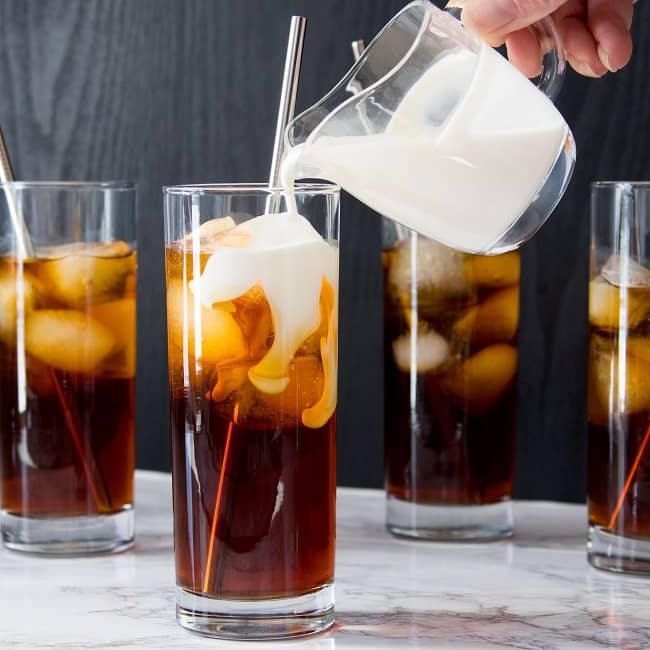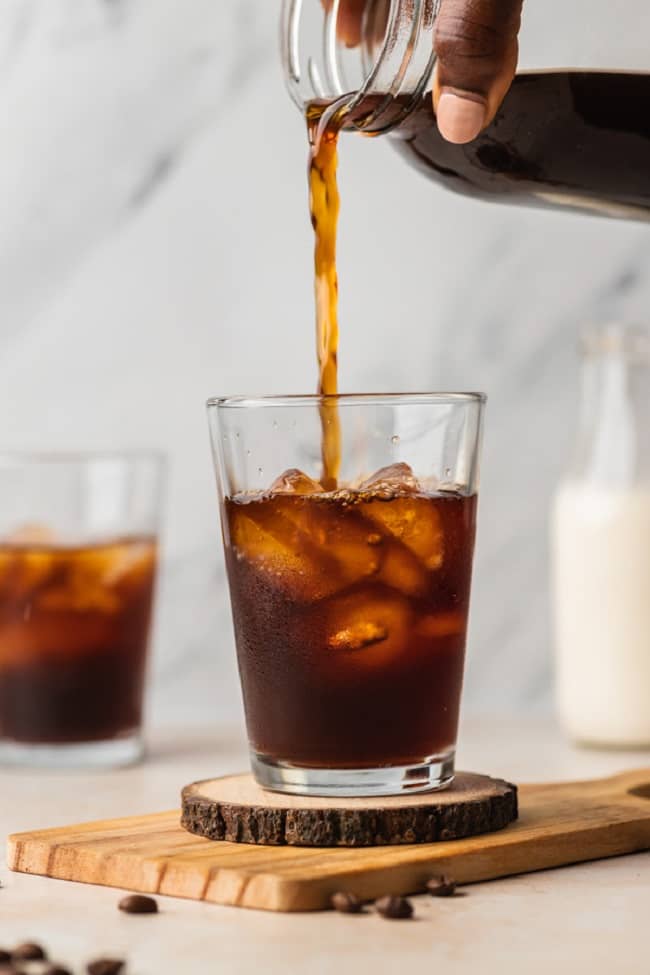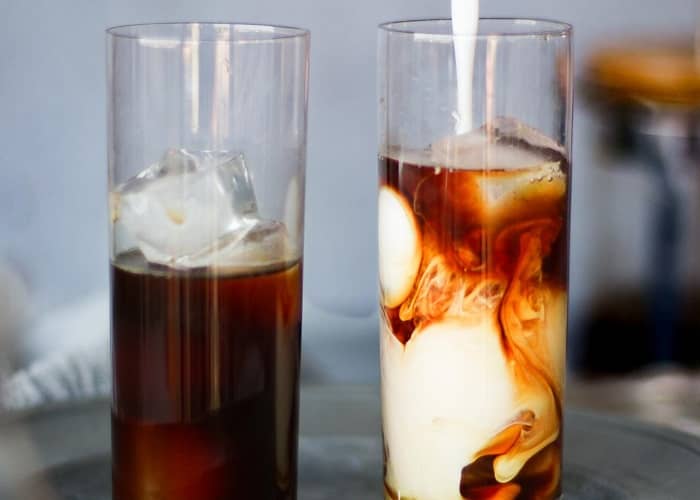- Food: Cold Brew Coffee
- Writer: Nicolas Wilson
- Content-type: Food Blog
I understand that fall is approaching, and everyone is looking forward to pumpkin spice lattes.
However, it’s still sweltering outdoors, and I’ve been honing my cold brew coffee skills all summer. So, as a self-proclaimed cold brew connoisseur, bear with me!
Cold-brew coffee produced at home is:
- Smooth, somewhat sweet, and extremely hydrating
- Easy to make and less expensive than buying from a coffee shop
- For those who have a busy morning ahead of them, this is a great option.
- If you’re in the mood for a cup of hot coffee, it’s simple to heat up.
coffee that has been coarsely ground for cold brew
You can create a cold brew on the weekend and then serve it straight from the fridge in the morning. There will be no boiling water. There’s no need to fiddle with a coffee machine.
Cold brew coffee is a game-changer for someone who isn’t a morning person at all.
Cold Brew Coffee Fun Facts

Cold brew has a strong flavor.
Many factors influence this, including the type of beans used, steeping period, and dilution. The dilution is the most straightforward aspect to manage. Cold Brew concentrate is very caffeinated, so don’t drink it directly!
The acidity of cold brew is lower.
If standard drip coffee or espresso makes your stomach uncomfortable, try the cold brew. The only way to know is to try it, and if you manufacture it yourself, you’ll have greater control over the finished result.
Cold Brew can be heated and consumed hot.
That is correct, and it is excellent. The flavor remains consistent.
It takes longer to prepare cold brew coffee than it does to make drip coffee.
Because the water is cold, it must steep for 12 to 18 hours to absorb the color, flavor, and caffeine of the coffee. The cold extraction procedure extracts less of the bitter components in coffee, resulting in a sweeter and smoother cup.
The greatest cold brew is made with coarsely ground coffee.
You don’t have a coffee grinder at home? It’s no problem. Simply ground your coffee in the grocery store’s large coffee grinder machine, with the coarse/French press setting selected. If you don’t have a scale, I’ve included approximate amounts of ground coffee to use for a more exact weight measurement (don’t worry about it).
To prepare cold brew, use whatever coffee variety you choose.
Any kind will do, and you’ll find that steeping it in cold water rather than hot water makes it taste less bitter. Comparing a glass of cold brew coffee to a cup of hot coffee of the same sort would be interesting.
Coffee Ratio for Cold Brew
Here’s how it works: This proportion is adaptable. If you have one, a kitchen scale will come in useful, but it is not required. You’re preparing cold brew concentrate, and once it’s ready, you may dilute it to taste.
- You’ll need 1 ounce (by weight) of coarsely ground coffee for 1 cup of water. That’s about a quarter cup of whole coffee beans, which makes about half a cup of ground coffee. 1 ounce is equal to 28 grams if you’re used to the metric system.
- Because some of the water will be absorbed by the coffee grounds, you’ll end up with a little less concentration than the amount of water you used. However, because you’ll dilute it with an equal amount of water, your final yield will be doubled. Is it as clear as mud? What do you mean, coffee? Good.
Examples
- In a typical 1-quart wide-mouth mason jar, create cold brew coffee (affiliate link). 3 ounces coarsely ground coffee (about 3/4 cup whole coffee beans transformed into 1 1/2 cups coarsely ground coffee) and 3 cups water in a jar
- You’ll get around 2 1/2 cups of cold brew concentrate after steeping and straining the mixture, which is enough for 5 cups of cold brew. You’ve just made enough coffee to last you through the week!
- Simply double the amounts given above if you have a 2-quart jar.
- You can use 5 ounces of coffee (approximately 1 1/4 cups whole coffee beans processed into about 2 1/2 cups coarsely ground coffee) and 5 cups water if you have an extra-large French press as I do. You’ll get roughly 4 1/4 cups to concentrate, which is plenty for 8 1/2 cups of cold brew.
Using a coffee filter to filter cold brew coffee
Steeping Time as Recommended

The steeping time is also adjustable. I’ve seen “overnight or 12 hours” and “at least 18 or up to 24 hours” suggested, so do what works best for you. Starbucks’ cold brew is steeped for 20 hours.
It’s fine if you over-steep yours (even for 24 hours or more). Your concentrate may taste a little bitterer than usual, but that’s not a problem. You might want to dilute it with some extra water if it’s very powerful.
Straining Your Cold Brew
After you’ve finished steeping the coffee, strain the water to remove the coffee grounds.
A fine-mesh sieve or a French press filter will not suffice (the concentrate will be muddy and sludgy). Most ways recommend using cheesecloth, but I despise it! It’s difficult to deal with and appears to be a waste of resources.
I experimented with additional choices and came up with two that are ideal. Examples of each can be found in my photos. Choose one of the following:
Use “basket” paper coffee filters, which splay out in a round seashell form like the ones shown above.
Make sure your filter is constructed of very thin paper rather than a heavier material that will take a long time to filter through. I used the following filters.
- A handkerchief from the past: Yes, a cocktail napkin or any small, thin, clean, lint-free cotton cloth will suffice. When draped across your sieve, it should be large enough to cover it. I found my handkerchief at the bottom of my picture props, and I love how easy it is to wash and reuse (though you might get a light coffee stain if you use your favorite white one).
- Place the coffee filter in a tiny fine-mesh strainer or drape a cloth over the sieve to strain. Pour the concentrate through it while holding it over a pitcher or liquid measuring cup. That concludes our discussion.
COLD-BREW COFFEE
| 15-minute prep time
20-minute total time (plus 12-hour resting time) |
Let’s make some cold-brew coffee together! It’s simple to make and convenient to have coffee on hand.
This recipe is for a 1-quart wide-mouth mason jar; you may adjust the amount of coffee by using 1 ounce* (28 grams) per 1 cup of water. The amounts given will yield approximately 2 1/2 cup of concentrate, which is enough for 5 cups of cold brew.
INGREDIENTS
- 3 ounces (85 grams) coarsely-ground coffee (that’s about ¾ cup of whole coffee beans turned into about 1 ½ cups* coarsely-ground coffee)
- 3 cups water (filtered water if you have it)
INSTRUCTIONS
- Combine the coffee and water in a 1-quart wide-mouth mason jar. To blend, stir everything together. Allowing my mixture to stand for about 5 minutes before stirring it again allows the coffee grinds to absorb additional water.
- Refrigerate your container for 12 to 18 hours with the lid on.
- Place a thin paper coffee filter or a small, thin cotton napkin, rag, or handkerchief over a small fine-mesh sieve while straining your cold brew. Pour the concentrate into a liquid measuring cup or pitcher through the sieve that has been prepared. Allow it to sit for a few minutes to absorb the last of the cold brew.
- To serve, fill a glass halfway with water and half with ice. Then pour the rest of the cold brew concentrate into the glass and swirl to mix. The cold-brew concentrate can be kept in the fridge for up to two weeks, but I feel that the flavor is the finest during the first week.
NOTES
MEASUREMENT NOTE: These are weighted ounces, not volumetric ounces. When it comes to non-liquid measurements, this is always the case.
“1 1/2 cups coarsely ground coffee” is the most precise quantity I can provide (the volume of ground coffee depends on the fineness of your grind), but it will suffice. Simply adjust the concentrate-to-water ratio as you pour your glass of cold brew to your satisfaction, and you’re ready to go.
